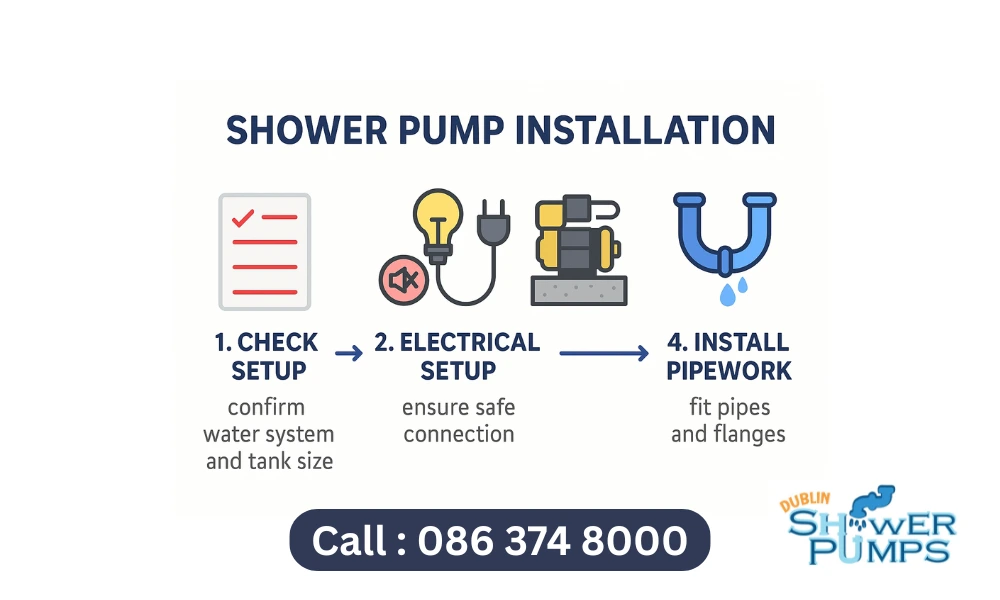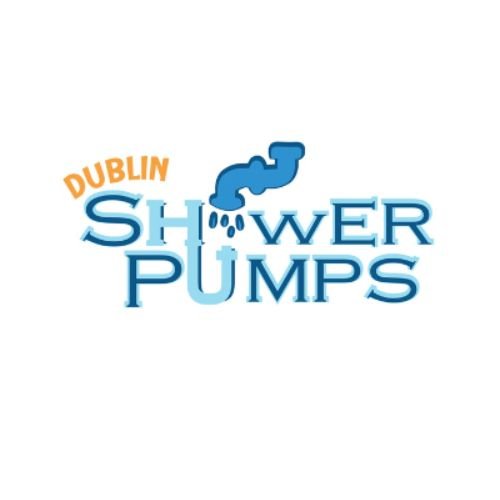The Complete Guide to Shower Pumps Installation in Dublin
Shower Pump Installation improves low water pressure in gravity-fed homes by boosting the flow of hot and cold water to your shower. Proper installation involves checking system head height, ensuring correct electrical wiring, using 22mm pipework, and fitting the appropriate flange to prevent airlocks. In Ireland, installation should follow national wiring and plumbing safety standards, and professional fitting is recommended for compliance and pump warranty protection. According to the Sustainable Energy Authority of Ireland (SEAI), well-installed water-boosting systems improve household efficiency and performance.
A Homeowner’s Guide to Shower Pumps Installation in Dublin
If your shower feels more like a slow drip than a refreshing spray, you’re not alone. Many homes in Dublin struggle with low water pressure, especially in upstairs bathrooms. That’s where a shower pump comes in.
We’ve done shower pump installation in Dublin for years, and we know what works — and what doesn’t. In this guide, we’ll walk you through the basics of choosing and installing a shower pump, without all the technical jargon. Whether you’re upgrading your bathroom or just tired of weak water flow, we’ll help you understand what to check, what to avoid, and how to get it done right.
Let’s dive in.

1. What Is a Shower Pump and Why Do You Need One?
A shower pump is a small device that boosts the water pressure coming from your tank to your shower. It’s especially useful in homes with gravity-fed systems, where water struggles to flow strongly on its own.
So, when should you consider installing one? If you’re noticing any of the following, it might be time:
The shower pressure is weak or uneven
Hot and cold water flows change suddenly
Your upstairs shower is barely usable
Adding a pump helps push water more forcefully through the pipes, giving you a steady, satisfying flow every time you turn on the tap.
🛠️ Need help choosing the right model? Check out our top brands for shower pumps guide — we’ve listed the most reliable ones we use in Dublin homes.
2. Checking Your Setup Before Installation
Before we install any shower pump, we always check a few things first — and you should too. A little preparation goes a long way in avoiding problems later.
First, you need to know what type of system you have. Most homes in Dublin with low pressure use gravity-fed systems, which usually require a positive head pump. For that to work properly, there must be enough distance (or “head”) between your cold water tank and the shower head — ideally about 2 metres. You can measure this from the bottom of your cold water tank to the showerhead level.
Next, make sure your cold water tank is big enough. We recommend at least a 50-gallon tank, so the pump doesn’t run dry when in use. If the tank is too small, the pump could be starved of water, which may cause it to burn out or run noisily.
Also, think about where the pump will be placed. It should be in a dry, frost-free location, like under the bath or inside an airing cupboard — but only if there’s enough airflow and access for future maintenance.
3. Safe Electrical Setup
Safety first — always. A shower pump is an electrical appliance, so it needs to be connected properly.
The pump should be connected to the main ring of your home’s electrical supply, using a 230v connection. Don’t connect it to the same circuit as your immersion heater or hot water cylinder — this could overload the system. Also, make sure the pump is placed at least 60mm away from the shower tray or basin, to keep it safe from splashes.
If you’re not confident with electrical work, it’s always best to hire a qualified installer. Our team has handled shower pump installation in Dublin safely in all kinds of homes, from modern apartments to older houses.
4. Reduce Noise and Vibration
One of the most common complaints we hear after a shower pump is installed? Shower Pump Noise. But the good news is, there are simple ways to keep things quiet.
Start by sitting the pump on something solid. A concrete slab (around 50mm thick) or a dense building block works well to absorb vibration. This helps stop the noise from echoing through the floor or walls. Whatever you do, don’t screw the pump directly to the floor — that only makes things worse.
You should also use the flexible hoses that come with most pumps. These not only make installation easier, but they help reduce vibration and prevent strain on the connections.
Worried about rattling pipes or trapped air making things louder? You’re not alone. We’ve written a full guide on how to prevent airlocks in your shower pump — it’s worth a read before turning everything on.
5. Pipework and Flanges: Get It Right
A good pump needs the right pipework to perform properly. We always recommend using 22mm pipework, even if your pump has 15mm connections. This reduces flow resistance and helps the pump work efficiently.
Before connecting your new shower pump, flush the pipes. This gets rid of any debris or dirt that could damage the pump. You can do this by running a few buckets of hot and cold water separately through the pipes.
Another important part? The flange.
Use a Surrey flange if your pump has 15mm connections
Use an Essex flange if it’s 22mm
This helps direct the hot water supply cleanly into the pump and keeps air bubbles out — which is key for keeping things quiet and working smoothly.
Finally, make sure you install full bore isolating valves on both the hot and cold water feeds. These let you turn off water to the pump without affecting the rest of the house — handy for maintenance or repairs.
6. Our Favourite Pump for Dublin Homes
We’ve installed a lot of shower pumps over the years, and Stuart Turner is one of the brands we keep coming back to. Why? Because they’re quiet, reliable, and built to last — all the things you want in a pump, especially in older Dublin homes.
Whether you’re upgrading an en suite or fitting out a family bathroom, Stuart Turner pumps are a solid choice. They’re easy to service, work well with different setups, and come with strong manufacturer warranties.
🛠️ Want to know which models are most popular with our customers?
Check out our full guide on Stuart Turner best-selling shower pumps — it breaks down the features and benefits clearly.
7. Still Not Sure? Let Us Help
We get it — all the talk about flanges, flow rates, and tank sizes can be a bit much. If you’re unsure what type of pump you need, or where to install it, we’re here to help.
Our team handles shower pump installation in Dublin every week, and we know how to get it done quickly, safely, and without hassle. We’re fully insured, certified, and always happy to offer honest advice — whether you’re ready to install now or just exploring your options.
💬 Need a quote or some guidance?
Contact our friendly team and we’ll talk you through the next steps — no pressure.
8. FAQs About Shower Pump Installation in Dublin
💬 How much does it cost to install a shower pump in Dublin?
The price depends on the type of pump, your existing pipework, and where the pump needs to go. On average, shower pump installation in Dublin can range from €300 to €900, including labour. If extra electrical or pipework is needed, it might cost a bit more.
💬 Can I install a shower pump myself?
While it’s possible to DIY a basic install, we always recommend hiring a qualified installer. Shower pumps involve both plumbing and electrical work, so it’s safer — and often required — to use a professional, especially to stay within warranty terms.
💬 Where’s the best place to install a shower pump?
Airing cupboards, under-bath spaces, or beside the hot water cylinder are common spots. The key is to keep it accessible, frost-free, and well-ventilated. Avoid tight, sealed spaces where the pump might overheat.
💬 How long does a typical installation take?
Most installations are completed within a few hours, especially if your plumbing setup is straightforward. If you’re replacing an old pump, the job is often quicker.
💬 Do I need planning permission or paperwork?
Not usually. However, all electrical work must follow Irish wiring regulations, and any modifications to your water system should be handled by a registered installer to avoid future issues.
Ready to Improve Your Shower Experience?
Let us help you with expert shower pump installation in Dublin. We're fully insured, experienced, and ready to get started.
📞 Contact Our Team Today
